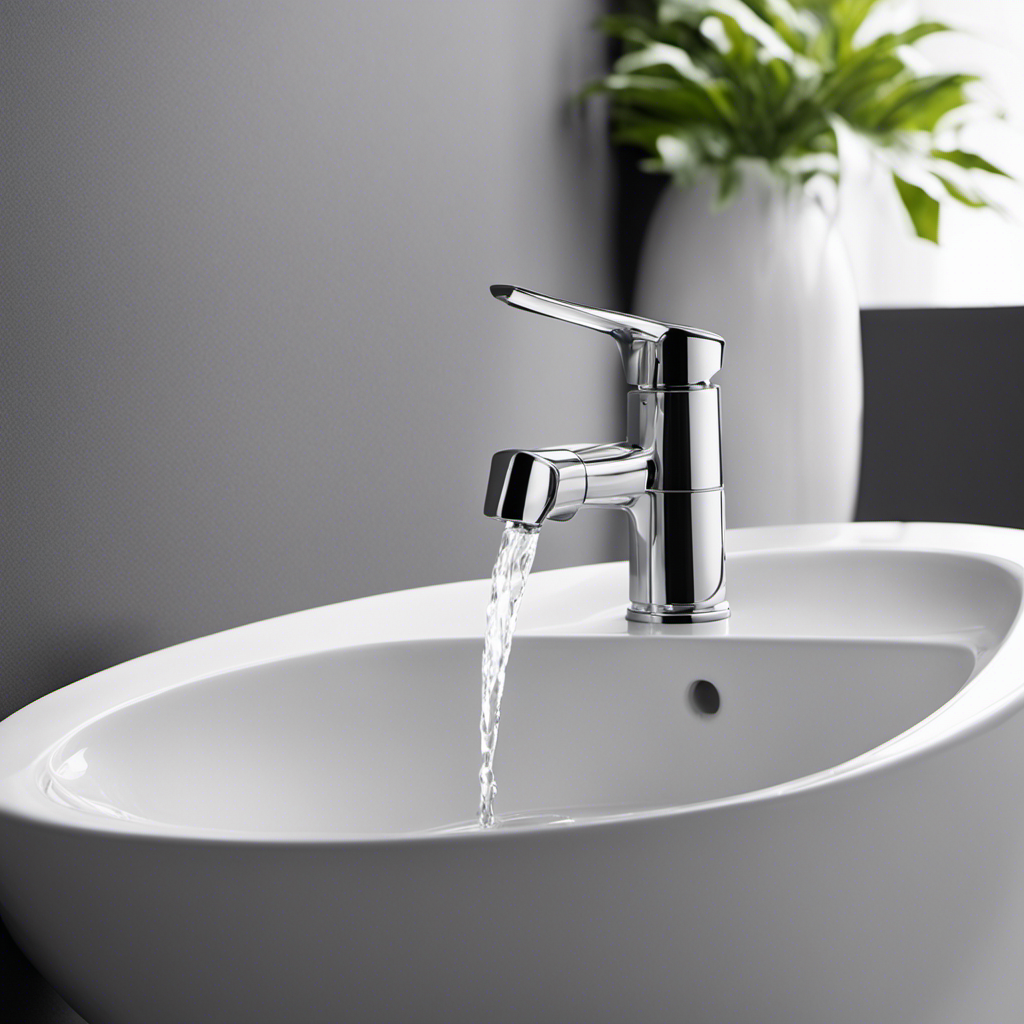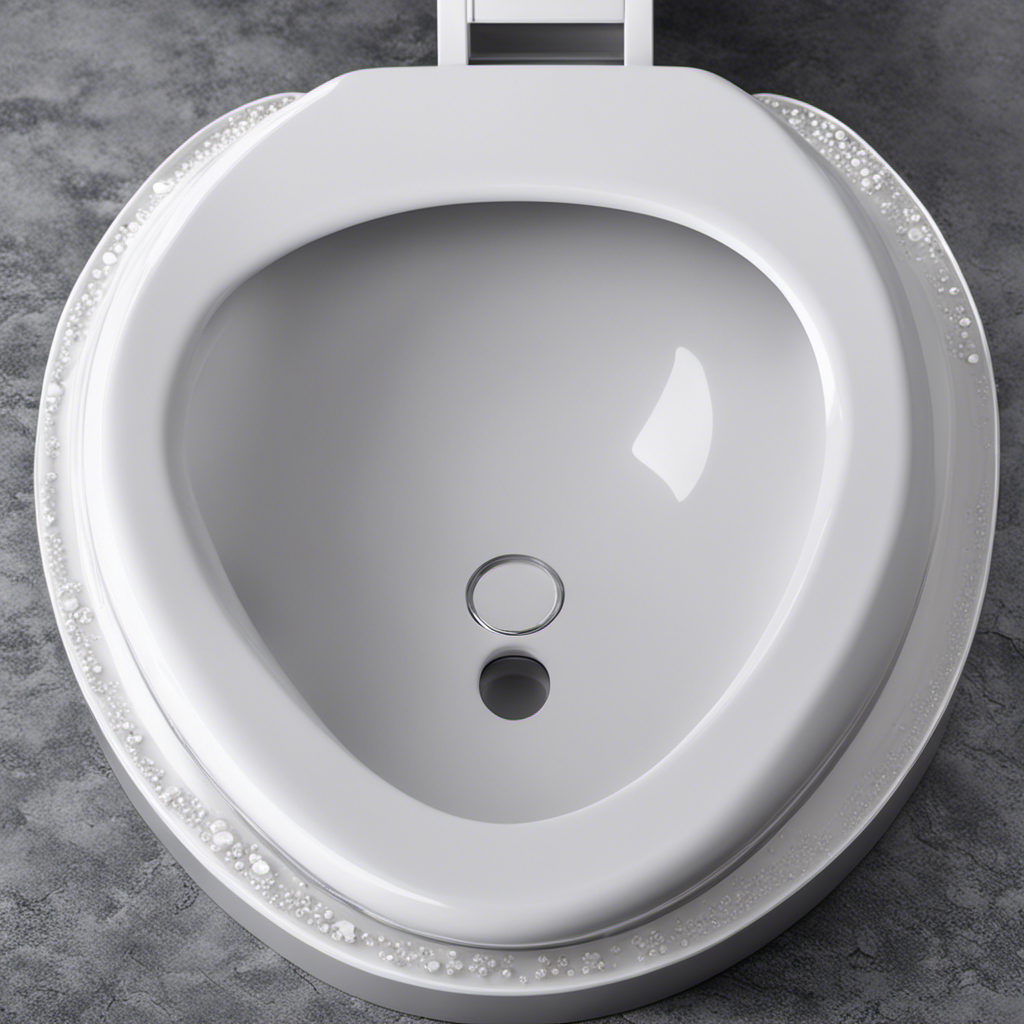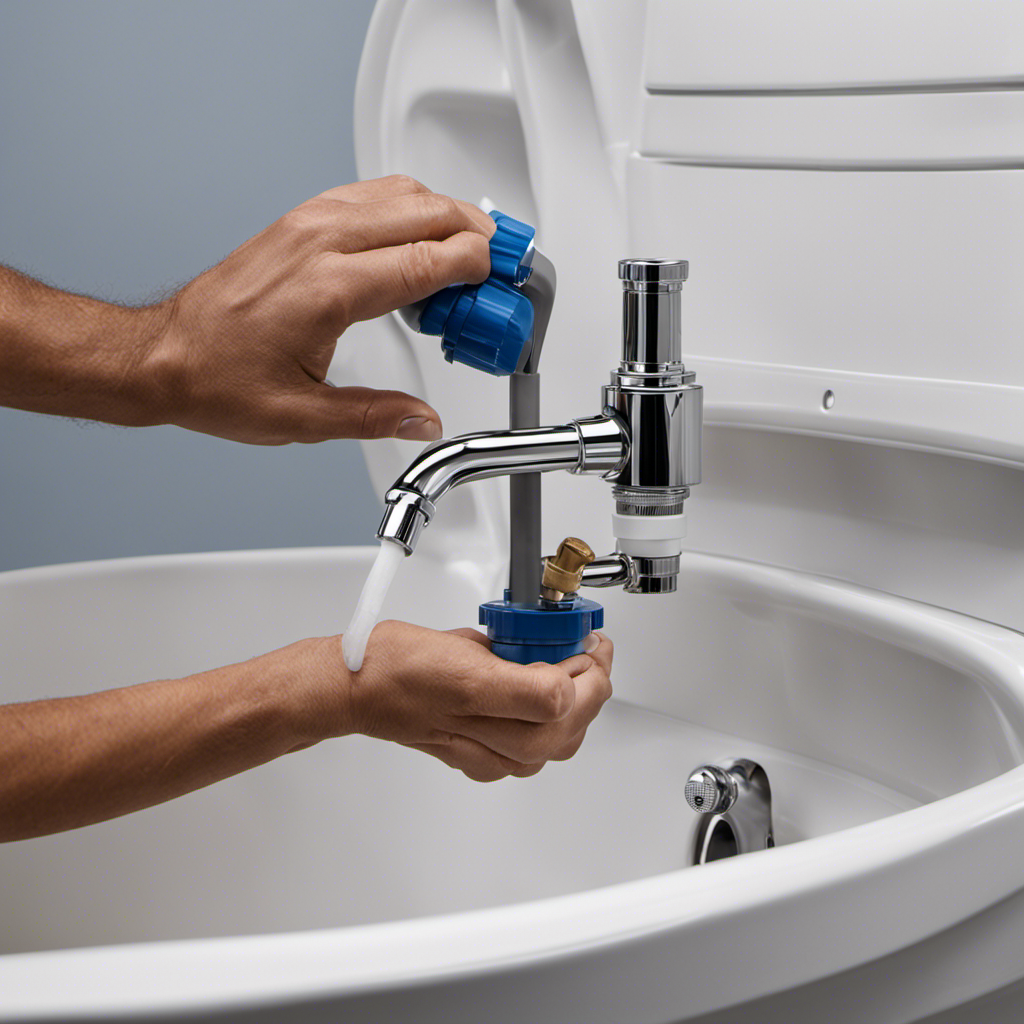I’ve discovered a theory that can revolutionize your bathroom experience: how to get a toilet to flush better.
Understanding the inner workings of a toilet and identifying common flushing issues is key.
With simple DIY fixes and upgrading options, you can ensure a more efficient flush every time.
Plus, I’ll share expert tips for maintaining a high-performing toilet.
Get ready to bid farewell to frustrating flushes and say hello to a smoother, more powerful flush!
Key Takeaways
- Understanding the anatomy of a toilet is crucial for diagnosing and resolving flush issues effectively.
- Common toilet flushing issues include weak flush, double flushing, phantom flush, and no flush.
- Simple DIY fixes for a better flush include optimizing water pressure, checking and adjusting the water supply valve, cleaning clogged rim or jet holes, and regular maintenance and cleaning.
- Upgrading your toilet with dual-flush or pressure-assist options, as well as replacing flush valves and flappers, can improve flushing performance.
Understanding the Anatomy of a Toilet
To understand why your toilet isn’t flushing properly, you should familiarize yourself with the anatomy of a toilet.
A toilet consists of several key components that work together to ensure an efficient flush. The primary mechanism responsible for flushing is the flush valve, which is connected to the toilet tank and releases water into the bowl when activated.
Another crucial component is the fill valve, which regulates the water level in the tank. If you’re experiencing issues with your toilet flush, troubleshooting can be done by checking these mechanisms. Ensure that the flush valve is not clogged or damaged, and the fill valve is functioning correctly.
Additionally, inspect the flapper, trip lever, and overflow tube for any potential problems. Understanding the different parts of your toilet will help you diagnose and resolve common flush issues effectively.
Identifying Common Toilet Flushing Issues
If your toilet isn’t flushing properly, you might be experiencing some common issues. Identifying these problems can help you troubleshoot and fix the flushing mechanism of your toilet. Here are four common toilet flushing issues you may encounter:
-
Weak Flush: This can be caused by a clogged rim jets or a partial blockage in the trapway. Check for any obstructions and clean the rim jets using a wire hanger or a toilet brush.
-
Double Flushing: If your toilet flushes twice before the water stops running, it may be an issue with the flapper valve. Inspect the flapper for any damage or debris and replace if necessary.
-
Phantom Flush: If your toilet randomly flushes without anyone pressing the handle, it could be due to a faulty flapper valve or a water level that is too high. Adjust the water level and replace the flapper if needed.
-
No Flush: If your toilet doesn’t flush at all, it could be a problem with the lift chain or the handle mechanism. Check the chain for any tangles or breakages and ensure the handle is securely attached.
Simple DIY Fixes for a Better Flush
By understanding and following simple DIY fixes, you can improve the flushing mechanism of your toilet.
When it comes to toilet flush troubleshooting, optimizing water pressure is key. One common issue is a weak flush, which can be caused by low water pressure. To fix this, check the water supply valve near the toilet and ensure it’s fully open. If it’s already open and the pressure is still low, you may need to adjust the fill valve or replace it altogether.
Another issue is a partial flush, where the toilet doesn’t fully empty the bowl. This can be due to a clogged rim or jet holes. Use a wire hanger or a small brush to clean these areas and restore proper flushing.
Upgrading Your Toilet for Improved Flushing
When upgrading your toilet, consider options that will enhance the flushing mechanism. It is important to choose toilet flushing alternatives that are efficient and powerful to ensure a proper flush every time. Here are four options to consider:
-
Dual-flush toilets: These toilets offer two flushing options – a partial flush for liquid waste and a full flush for solid waste. This allows you to conserve water and customize your flush based on the type of waste.
-
Pressure-assist toilets: These toilets use compressed air to create a powerful flush. They are known for their effectiveness in clearing waste and preventing clogs.
-
Gravity-flush toilets with larger trapways: A larger trapway allows for a faster and more efficient flush. This reduces the chances of clogs and ensures a thorough flush.
-
Upgraded flush valves and flappers: Sometimes, all your toilet needs is a simple upgrade of the flush valve and flapper. These components can wear out over time, leading to weak flushes. Installing high-quality replacements can improve the flushing performance.
Expert Tips for Maintaining a High-Performing Toilet
To maintain a high-performing toilet, remember to regularly clean the bowl and inspect the flushing mechanism for any signs of wear or damage.
The toilet flushing mechanism is a critical component that ensures proper water flow and efficient flushing. Troubleshooting common toilet issues often involves examining this mechanism for any clogs, leaks, or malfunctions.
Start by checking the water level in the tank, making sure it is at the appropriate level marked on the tank’s interior. Inspect the flapper valve for any cracks or leaks that could prevent a proper seal. Additionally, ensure that the chain connecting the flush handle to the flapper is properly adjusted and not tangled.
Conclusion
In conclusion, maintaining a high-performing toilet is crucial for a better flushing experience.
By understanding the anatomy of a toilet and identifying common flushing issues, you can easily fix them with simple DIY solutions.
However, if you’re looking for a more permanent solution, consider upgrading your toilet to improve its flushing capabilities.
Remember, regular maintenance is key to keeping your toilet in top shape.
So, don’t hesitate to follow these expert tips and enjoy a flawless flush every time.










